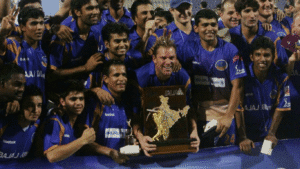Football fans around the world are familiar with the iconic names of Athletic Club and FC Barcelona—two of Spain’s most prestigious and storied football clubs. Their rivalry, rich in history and competitive spirit, has captivated millions of fans for decades. While FC Barcelona is globally renowned for its flashy, possession-based football and star-studded roster, Athletic Club stands out as one of the most unique teams in the world for its steadfast commitment to tradition and its “Cantera” policy, which focuses on recruiting and developing Basque talent.
This article dives deep into the Athletic Club vs Barcelona rivalry, comparing their football philosophies, historical significance, head-to-head records, and notable encounters.
1. Overview of Athletic Club
Founded in 1898, Athletic Club (commonly known as Athletic Bilbao) is based in Bilbao, the largest city in the Basque Country. The club’s distinct identity stems from its unwavering adherence to its cantera policy, which only allows players with Basque heritage or those trained in the region to play for the team. This tradition has made Athletic a symbol of regional pride and has set it apart from other football clubs worldwide.
Despite this self-imposed limitation, the Athletic Club has enjoyed considerable success. It is one of only three clubs (alongside Barcelona and Real Madrid) to have never been relegated from Spain’s top football division, La Liga. The club has won 8 La Liga titles and 24 Copa del Rey trophies, making it one of Spain’s most successful football institutions.
Key Characteristics of Athletic Club:
- Home Stadium: San Mamés (Capacity: 53,000)
- Philosophy: Strong focus on physicality, defensive solidity, and teamwork.
- Tradition: Cantera policy (only Basque players or those with connections to the region).
- Notable Players: Telmo Zarra, Aritz Aduriz, Andoni Iraola, Iker Muniain.
2. Overview of FC Barcelona
FC Barcelona, or Barça, is one of the most iconic football clubs in the world, founded in 1899. Based in Catalonia, Barcelona has become a symbol of regional identity, political defiance, and sporting excellence. The club’s famous motto, “Més que un club” (“More than a club”), reflects its cultural and social significance beyond football.
Barça has set the standard for attacking football, prioritizing possession, short-passing, and fluid movement—particularly under the guidance of legendary coaches like Johan Cruyff and Pep Guardiola. With numerous La Liga titles (26), Copa del Rey victories (31), and Champions League trophies (5), FC Barcelona’s history is filled with accolades. The club has nurtured some of the greatest players to ever grace the sport, including Lionel Messi, Xavi Hernández, Andrés Iniesta, and Ronaldinho.
Key Characteristics of FC Barcelona:
- Home Stadium: Camp Nou (Capacity: 99,354)
- Philosophy: Possession-based, attacking football; the famous “tiki-taka” style.
- Tradition: Developing homegrown talent through the famed La Masia academy.
- Notable Players: Lionel Messi, Xavi, Iniesta, Johan Cruyff, Ronaldinho.
3. Athletic Club vs Barcelona: A Comparison of Football Philosophies
The clash between Athletic Club and FC Barcelona is not just a battle of players on the pitch—it’s a meeting of two distinct footballing ideologies.
Athletic Club’s Philosophy
Athletic Club’s football style has traditionally been defensive, physical, and disciplined. The team focuses on building from the back, prioritizing defensive solidity and pressing opponents aggressively. Known for their resilience, Athletic’s players are often physically strong and hard-working. The club relies on homegrown talent, making the team chemistry naturally cohesive, as many players progress through the club’s youth ranks.
FC Barcelona’s Philosophy
On the other hand, FC Barcelona’s identity revolves around possession and control of the ball. Rooted in the Dutch philosophy of “total football,” Barça’s game plan focuses on dominating play through precise passing, positional awareness, and a high defensive line. The hallmark of Barça’s style has been the “tiki-taka” approach, where short, quick passes break down opposition defenses. Unlike Athletic’s more pragmatic approach, Barcelona prefers to outplay opponents by keeping the ball and crafting intricate attacks.
4. History of the Athletic Club vs Barcelona Rivalry
The rivalry between Athletic Club and FC Barcelona dates back to the early 20th century, with both clubs playing pivotal roles in the development of Spanish football. Their encounters often reflect the broader cultural and political tensions between the Basque Country and Catalonia, regions with strong identities and autonomy movements.
Early Years and the Copa del Rey
In the early 1900s, both clubs frequently clashed in the Copa del Rey, Spain’s national cup competition. Athletic Club and Barcelona dominated the tournament in its infancy, and their heated matches laid the foundation for a fierce rivalry.
The rivalry intensified as the Copa del Rey grew in prestige. Both clubs have historically valued the competition, and many of their encounters have been high-stakes matches, with finals that defined eras for both clubs. Athletic Club, in particular, has enjoyed immense success in the tournament, often meeting Barcelona in critical fixtures.
The Franco Era
Under the dictatorship of Francisco Franco (1939–1975), the regional identities of the Basque Country and Catalonia were suppressed, heightening the symbolic nature of clashes between Athletic Club and Barcelona. While Real Madrid was seen as the regime’s favored team, matches between Athletic and Barcelona became expressions of cultural resistance, adding a layer of intensity to their rivalry.
The Modern Era
In modern times, the rivalry has become more defined by on-field competition than politics, although regional pride remains a crucial factor. The two clubs frequently compete for major domestic honors, with Barcelona often having the upper hand due to their superior financial resources and access to global talent. However, Athletic’s commitment to its Basque roots ensures that every match against Barcelona is hard-fought and fiercely contested.
5. Key Matches and Memorable Encounters
Copa del Rey Final 2015
One of the most memorable matches between the two sides occurred in the 2015 Copa del Rey Final. Barcelona, led by Lionel Messi, was aiming for a domestic double, while Athletic was hungry for their first major trophy in over 30 years. Messi scored one of the best goals in his career, dribbling past several Athletic defenders to seal a 3-1 victory for Barcelona.
1984 Copa del Rey Final
The 1984 Copa del Rey Final was infamous for its violent conclusion. Athletic Club won 1-0, but the match ended in an all-out brawl involving players from both teams. The tensions between the clubs reached their peak, cementing the rivalry as one of the fiercest in Spanish football.
6. Head-to-Head Record: Athletic Club vs Barcelona
In terms of overall statistics, Barcelona has historically had the upper hand. However, Athletic has enjoyed its share of victories, particularly in cup competitions where they have caused several upsets.
Recent Head-to-Head Statistics (as of the 2023/24 Season)
- Total Matches Played: 246
- Barcelona Wins: 126
- Athletic Club Wins: 80
- Draws: 40
While Barcelona dominates in La Liga fixtures, Athletic has managed notable victories in the Supercopa de España and Copa del Rey, especially in one-off knockout matches where their disciplined, high-energy football can disrupt Barça’s rhythm.
7. Current Squad Analysis and Tactical Breakdown
Athletic Club
Under manager Ernesto Valverde, Athletic Club plays a balanced 4-2-3-1 formation, focusing on maintaining a solid defense while utilizing the wide areas for counter-attacks. Key players like Iñaki Williams and Iker Muniain provide the creative spark and pace needed to challenge Barcelona’s often high defensive line.
FC Barcelona
Managed by Xavi Hernández, Barcelona typically deploys a 4-3-3 formation. This system emphasizes ball control and quick transitions, with players like Pedri, Gavi, and Robert Lewandowski being pivotal in both orchestrating attacks and finishing them off. The focus remains on possession, high pressing, and creative interplay between the midfield and forwards.
8. Recent Encounters and Form
In the 2022/23 season, Barcelona and Athletic faced each other twice in La Liga, with Barcelona winning both encounters. However, Athletic put up a strong fight, particularly at San Mamés, where the home crowd created an intense atmosphere that nearly tipped the scales in their favor.
Barcelona remains at the top of Spanish football, but Athletic’s tenacity means they are never an easy opponent, especially in cup ties, where one-off results can make all the difference.
9. Impact on La Liga and Spanish Football
The rivalry between Athletic Club and Barcelona is more than just a regional or historical contest. It has had a profound impact on La Liga and Spanish football as a whole.
Athletic’s Influence on Spanish Football
Despite competing with a limited player pool due to their cantera policy, Athletic Club has consistently demonstrated that a club rooted in tradition and local talent can remain competitive at the highest level. Their philosophy and commitment to Basque players have contributed to the cultural richness of Spanish football. Athletic’s youth development program is among the best in Spain, having produced top talents who have gone on to represent Spain at the international level.
Barcelona’s Global Influence
FC Barcelona has revolutionized football on a global scale with their possession-based style and reliance on homegrown talent from their famous La Masia academy. The club’s philosophy of “tiki-taka” has been widely emulated across the footballing world, and their success has helped raise the profile of La Liga to global prominence. Players like Lionel Messi, Xavi, and Andrés Iniesta have become international icons, enhancing Barcelona’s global brand.
The Rivalry’s Contribution to La Liga
The clashes between Athletic Club and Barcelona have helped elevate La Liga as a competitive and exciting football league. While the rivalry may not receive the same attention as El Clásico (Barcelona vs Real Madrid), it remains one of the most storied and fiercely contested fixtures in Spanish football.
Both clubs represent the unique cultural and regional identities of the Basque Country and Catalonia, respectively, adding a deeper layer of significance to their matches. Fans across Spain and the world tune in to witness the clash of these two footballing titans, knowing that the fixture is not only about points but also about pride and tradition.
Frequently Asked Questions (FAQs)
Q: Why is the rivalry between Athletic Club and Barcelona so significant?
The rivalry is rooted in both football and cultural history. Athletic represents the Basque Country, while Barcelona represents Catalonia—two regions with strong identities and histories of political struggle. On the pitch, the two clubs have clashed for over a century, with key matches in the Copa del Rey and La Liga.
Q: What is Athletic Club’s cantera policy, and how does it affect their team?
Athletic Club’s cantera policy only allows players of Basque origin or those trained in the Basque Country to play for the club. While this limits their player pool, it fosters a strong sense of regional pride and unity within the team. Despite these limitations, Athletic has remained competitive in Spain’s top division.
Q: Which club has the upper hand in terms of head-to-head victories?
Historically, Barcelona has the upper hand with more victories in their head-to-head record. However, Athletic has often been able to upset Barcelona, particularly in knockout competitions like the Copa del Rey and the Supercopa de España.
Q: What are some of the most memorable matches between the two teams?
Some of the most memorable encounters include the 1984 Copa del Rey final, which ended in a brawl after Athletic’s 1-0 victory, and the 2015 Copa del Rey final, where Lionel Messi scored one of the greatest goals of his career in Barcelona’s 3-1 win.
Q: How does Athletic Club’s style of play contrast with FC Barcelona’s?
Athletic’s style is more defensive and physical, relying on strong team cohesion and high-energy pressing. Barcelona’s style, on the other hand, is based on possession, control, and intricate passing, with a focus on keeping the ball and breaking down opponents through their “tiki-taka” approach.
Conclusion
The Athletic Club vs Barcelona rivalry is a fascinating contest that goes beyond football. It is a clash of regional identities, footballing philosophies, and traditions that have shaped Spanish football for over a century. Whether it’s Athletic’s proud Basque roots or Barcelona’s world-renowned possession-based football, the match always promises high-quality entertainment, passion, and drama.
Both teams have carved out their own legacies in La Liga and continue to influence the next generation of players and fans. Whether you’re a fan of Athletic’s hard-nosed, defensive resilience or Barcelona’s stylish, possession-based dominance, their matches offer something for every football lover. With both clubs maintaining their high standards, this rivalry is set to continue captivating fans for many years to come.




